The names are confusing because they both contain the word lily, but daylilies are not lilies. They are a plant that grows by a tuberous root system, while the lily grows from an underground bulb. They differ in several other important ways, such as growth pattern, toxicity, flower size, flower shape, and climate. We will discuss the differences and similarities in more detail below.
Comparing Daylily vs. Lily
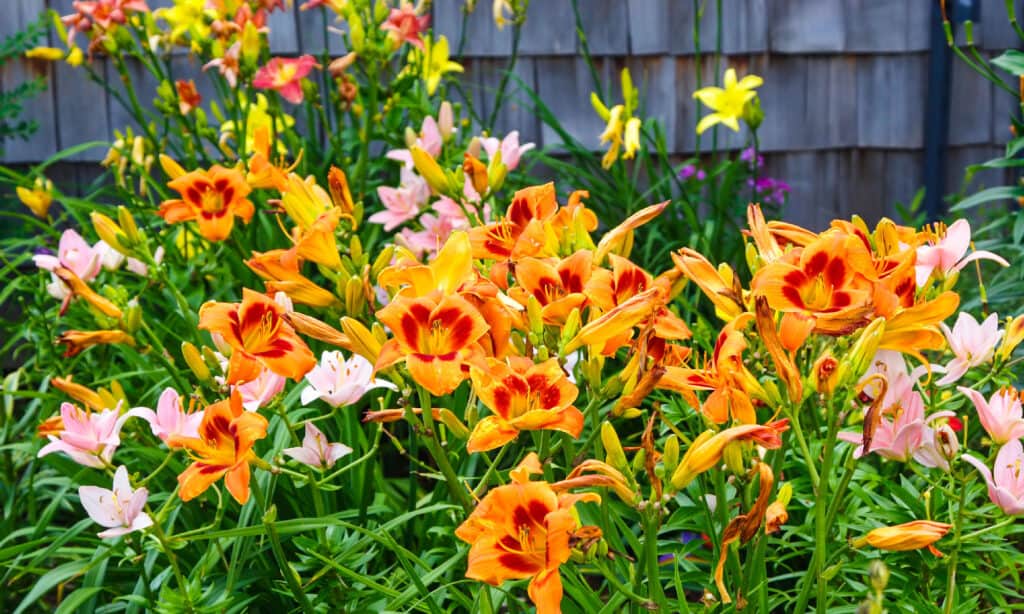
Daylily flowers are primarily orange or yellow, although a few hybrid pinks and purples can be found at specialty nurseries.
©iStock.com/onepony
| Characteristic | Daylily | Lily |
|---|---|---|
| Scientific Family | genus Hemerocallis, family Asphodelaceae. 30,000 varieties | genus Lilium, family Liliaceae. 100 varieties |
| Type of Plant | A flowering perennial that grows from tuberous roots | An herbaceous flowering plant that grows from a bulb |
| Stem Count | multiple stems | single stem |
| Petals | 6 petals grown in layers | 6 petals – not layered |
| Anthers | 2 anthers plus 6 stamens | 6 anthers plus 6 stamens |
| Leaves | Long strap-shaped leaves grow from the soil line upward | Leaves grow in a spiral pattern around the single stem |
| Bloom Length | Blooms last for one day | Blooms last for 7-10 days |
| Flower Shape | Circular-shaped or triangular-shaped flowers. Can be single, double, or ruffled | Trumpet-shaped, bowl-shaped, or funnel-shaped. Single or double |
| Flower Size | Can be from 3 inches to 15 inches wide | Can be from 4 inches to 5 inches wide |
| Plant Height | 2 to 4 feet tall | 2 to 10 feet tall |
| Colors | red, orange, yellow, pink, purple | white, yellow, pink, red, and orange |
| Toxic | Edible | Highly toxic |
| USDA Hardiness Zone | Zones ALL | Zones 3-9 |
Key Differences Between Daylily vs. Lily
The key difference between daylilies and lilies is the length of bloom times, with daylilies only lasting one day. Other differences include growth type and height, growing requirements, propagation, and toxicity.
Let us discuss these things in more detail now.
Daylily vs. Lily: Plant and Flower Description
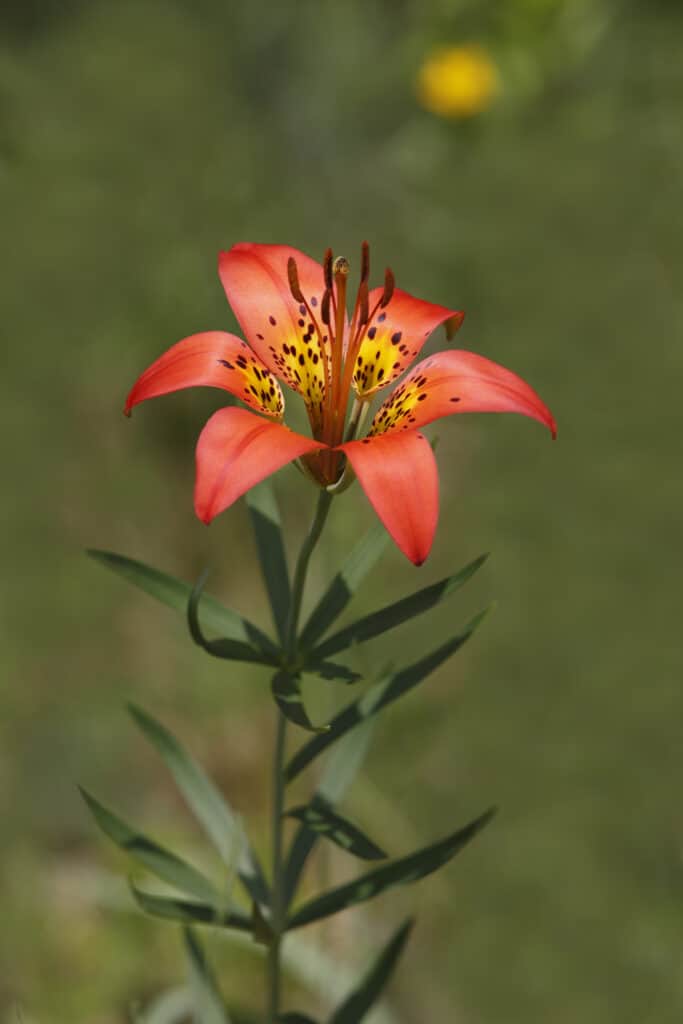
The lily grows a single stem right out of the ground and forms a single flower at the top.
©iStock.com/BrianLasenby
The daylily has a grassy appearance, with long strappy leaves that grow from the base of the soil outward. They are usually only two or three feet tall and grow in clumps, much like decorative clumping grass.
Daylily flowers are primarily orange or yellow, although a few hybrid pinks and purples can be found at specialty nurseries. Each plant grows multiple stems of flowers from the middle of the plant. Each flower is three or four inches wide, but much larger hybrids exist. The flowers are triangular or star-shaped and have six petals that grow in layers on top of each other. These lovely flowers bloom in the morning and last for one day only.
The lily grows a single stem right out of the ground and forms a single flower at the top; for this reason, they are often planted in large groupings, as they look rather sad standing alone. The leaves grow in a whorl around the stem.
There are many types of lilies, but they often come in red, orange, and yellow. A true lily always has six petals and six anthers. Each bloom is four or five inches in diameter and shaped like a trumpet or funnel. The flowers are good for indoor vases and last seven to ten days.
Daylily vs. Lily: Growth Type and Height
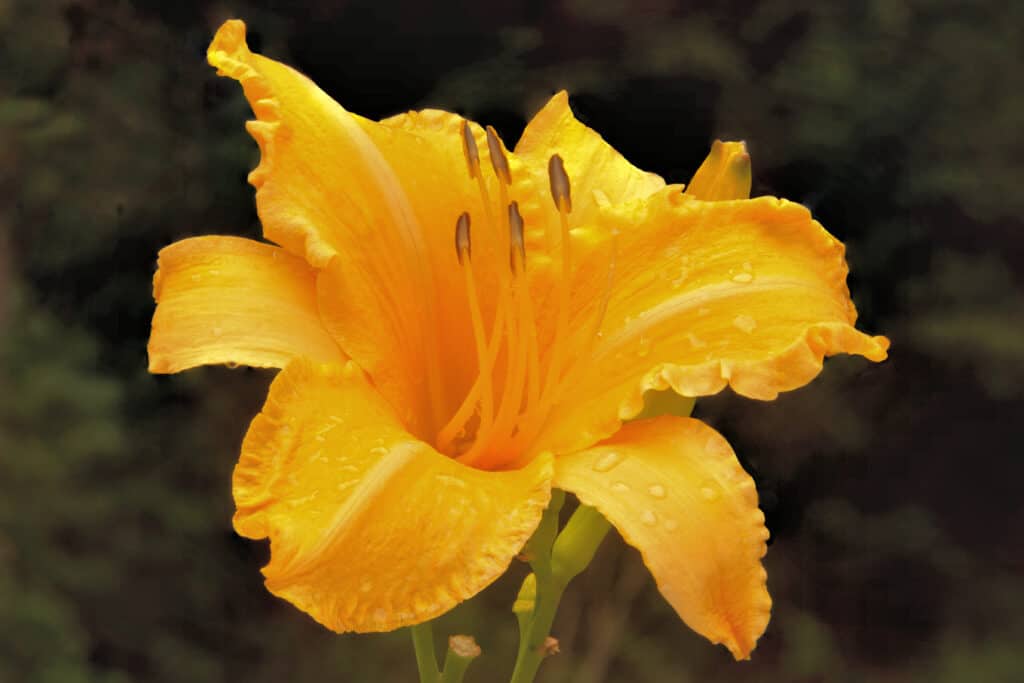
Daylilies are not known for their size and stay under four feet tall.
©iStock.com/Gerald G Gantar
Daylilies grow by tuberous roots, and the root gets longer and will spread along, sprouting new plants as it goes. Daylilies are not known for their size and stay under four feet tall.
Lilies are bulbs, similar to daffodils and tulips. The bulbs multiply underground and slowly provide you with new flowers. Most lilies are two to four feet tall, but some hybrid growers have varieties that grow as tall as ten feet!
Daylily vs. Lily: Growing Requirements
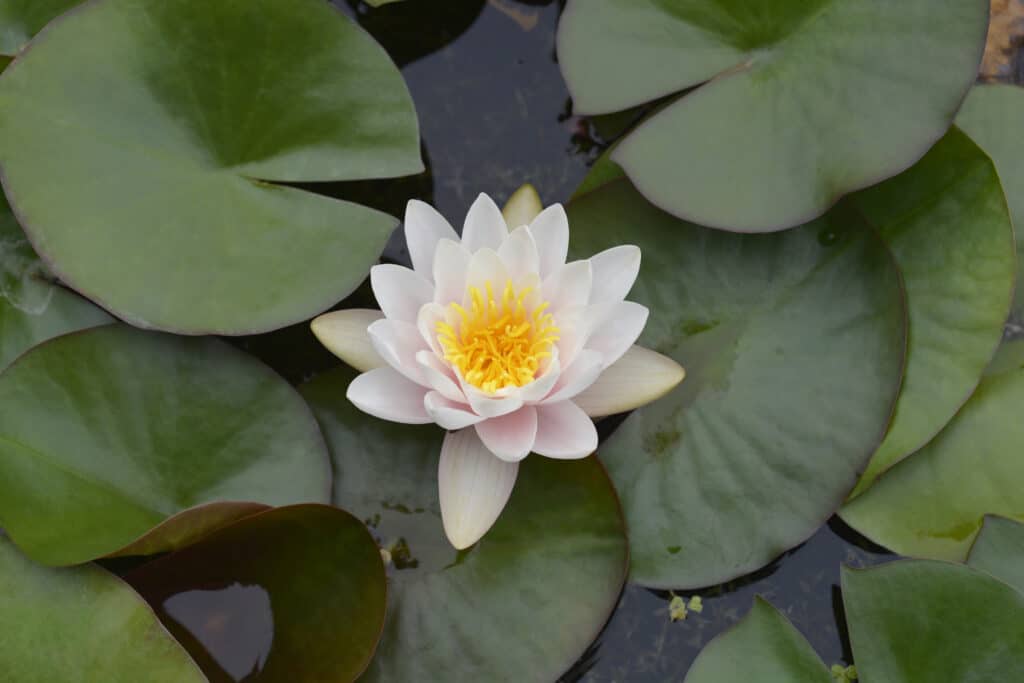
Water lilies are beautiful white perennial plants that provide food for
fish
and wildlife.
©iStock.com/Nahhan
You can plant either of these flowering plants in the very early spring or fall. If burying your tubers or bulbs in the fall, it is essential to get them in the ground at least four weeks preceding your last frost date so they can put down strong roots before the ground freezes.
Daylilies and lilies both enjoy a garden location with full sun and well-drained, rich soil. These plants thrive in raised beds or pots if you have water-logged soil.
Daylilies are very winter hardy and will grow in any USDA Hardiness zone. Lilies are also very robust, growing in zones 3-10.
Daylily vs. Lily: Propagation
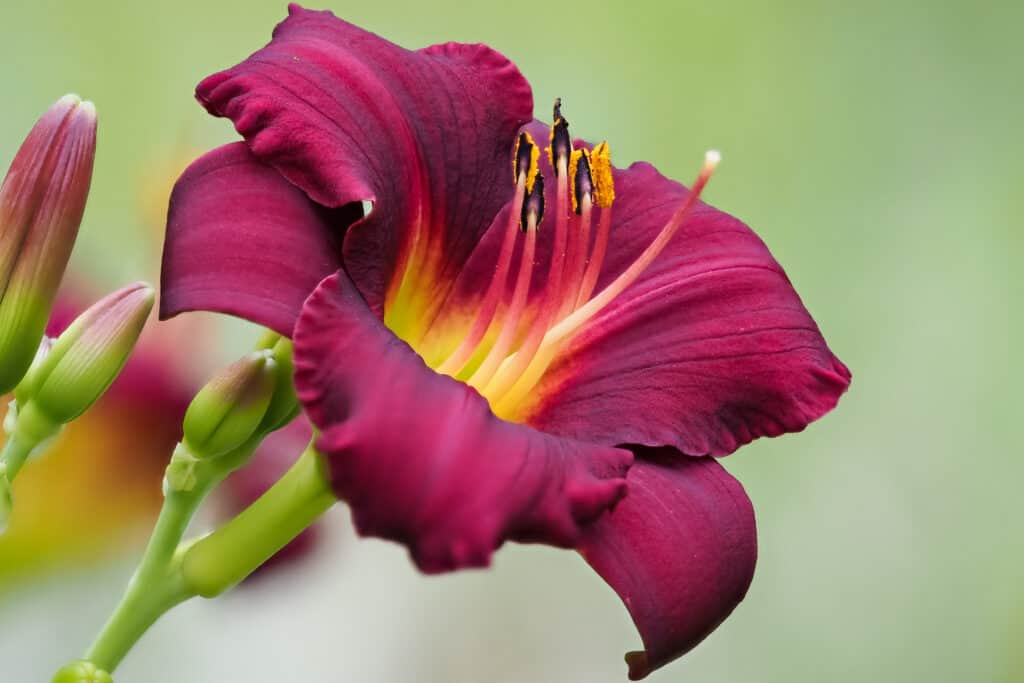
Daylilies are very winter hardy and will grow in any USDA Hardiness zone.
©Serge Goujon/Shutterstock.com
To propagate a daylily, wait until all of the foliage has naturally died back in the fall. Dig up the whole plant and divide the tuber into sections. You will see where to divide it, as each section has a natural demarcation and its own set of roots.
To propagate a lily, you want to wait several years after planting. At this time, you will see smaller lily plants growing around the mother plant in a crowded formation. Dig up the bulbs in the fall after the leaves have all turned brown and died. Separate the smaller baby bulbs and replant them in a new location. It is generally a good idea to apply fertilizer before replanting everyone.
Daylily vs. Lily: Toxicity
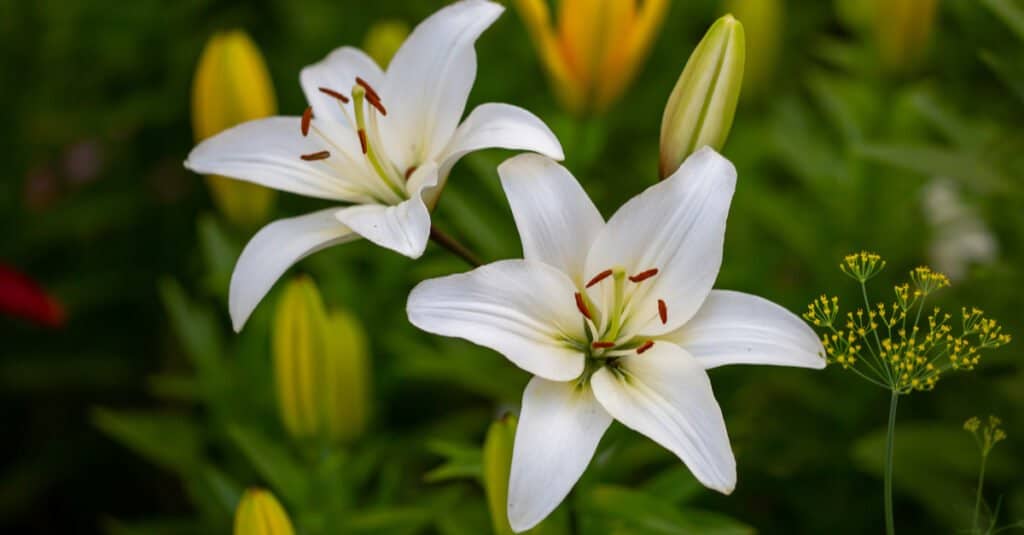
Lilies are highly toxic.
©Anton Nikitinskiy/Shutterstock.com
Daylilies are edible. They are often used in Asian cuisine, both fresh and dried. You can pluck the young shoots, boil the tubers like potatoes, or add the colorful daylily flowers to your salads.
Lilies, on the other hand, are highly toxic. Many cats have died from kidney failure by consuming even a tiny part of a leaf or flower petal from a lily. Small amounts from licking the pollen grains or drinking water out of the vase can be toxic to your pet.
Lilies are also toxic to children and dogs, but to a much lesser degree. If you suspect your child has ingested a lily, contact poison control, as some varieties are more dangerous than others.
If you suspect your cat has eaten any part of a lily, treat this as an emergency and seek immediate veterinary care, as even waiting 12 hours can be fatal.
NEXT UP…
- Are Lilies Poisonous To Dogs Or Cats? Here is more information about dogs and cats versus lilies.
- Canna Lily vs. Calla Lily: What Are The Differences?
- 7 Best Perennial Flowers. Here is a great list of several flowers that will bloom year after year.
The photo featured at the top of this post is ©
Thank you for reading! Have some feedback for us? Contact the AZ Animals editorial team.






